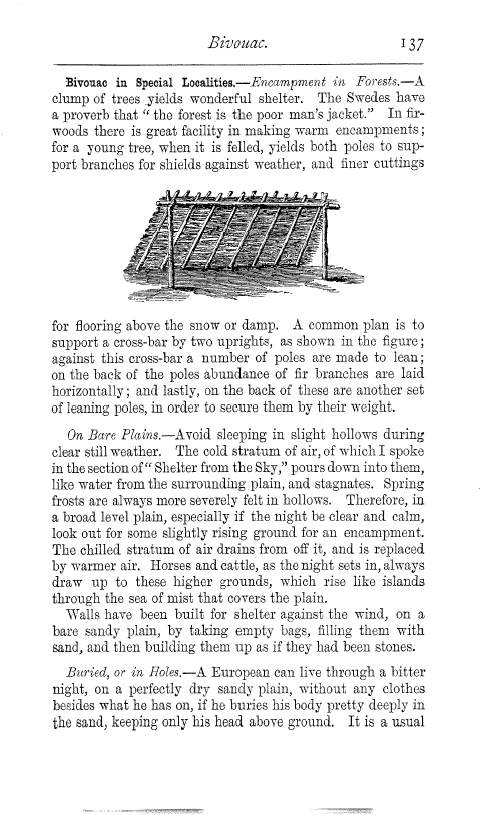Bivouac. 137
Bivouac in Special Localities.-Encampment in forests.-A chimp of trees yields wonderful shelter. The Swedes have a proverb that " the forest is the poor man's jacket." In firwoods there is great facility in making warm encampments ; for a young tree, when it is felled, yields both poles to support branches for shields against weather, and finer cuttings
for flooring above the snow or damp. A common plan is to support a cross-bar by two uprights, as shown in the figure ; against this cross-bar a number of poles are made to lean ; on the back of the poles abundance of fir branches are laid horizontally; and lastly, on the back of these are another set of leaning poles, in order to secure them by their weight.
On Bare Plains.-Avoid sleeping in slight hollows during clear still weather. The cold stratum of air, of which I spoke in the section of " Shelter from the Sky," pours down into them, like water from the surrounding plain, and stagnates. Spring frosts are always more severely felt in hollows. Therefore, in a broad level plain, especially if the night be clear and calm, look out for some slightly rising ground for an encampment. The chilled stratum of air drains from off it, and is replaced by warmer air. Horses and cattle, as the night sets in, always draw up to these higher grounds, which rise like islands through the sea of mist that covers the plain.
Walls have been built for shelter against the wind, on a bare sandy plain, by taking empty bags, filling them with sand, and then building them up as if they had been stones.
Buried, or in Holes.-A European can live through a bitter night, on a perfectly dry sandy plain, without any clothes besides what he has on, if he buries his body pretty deeply in the sand, keeping only his head above ground. It is a usual

